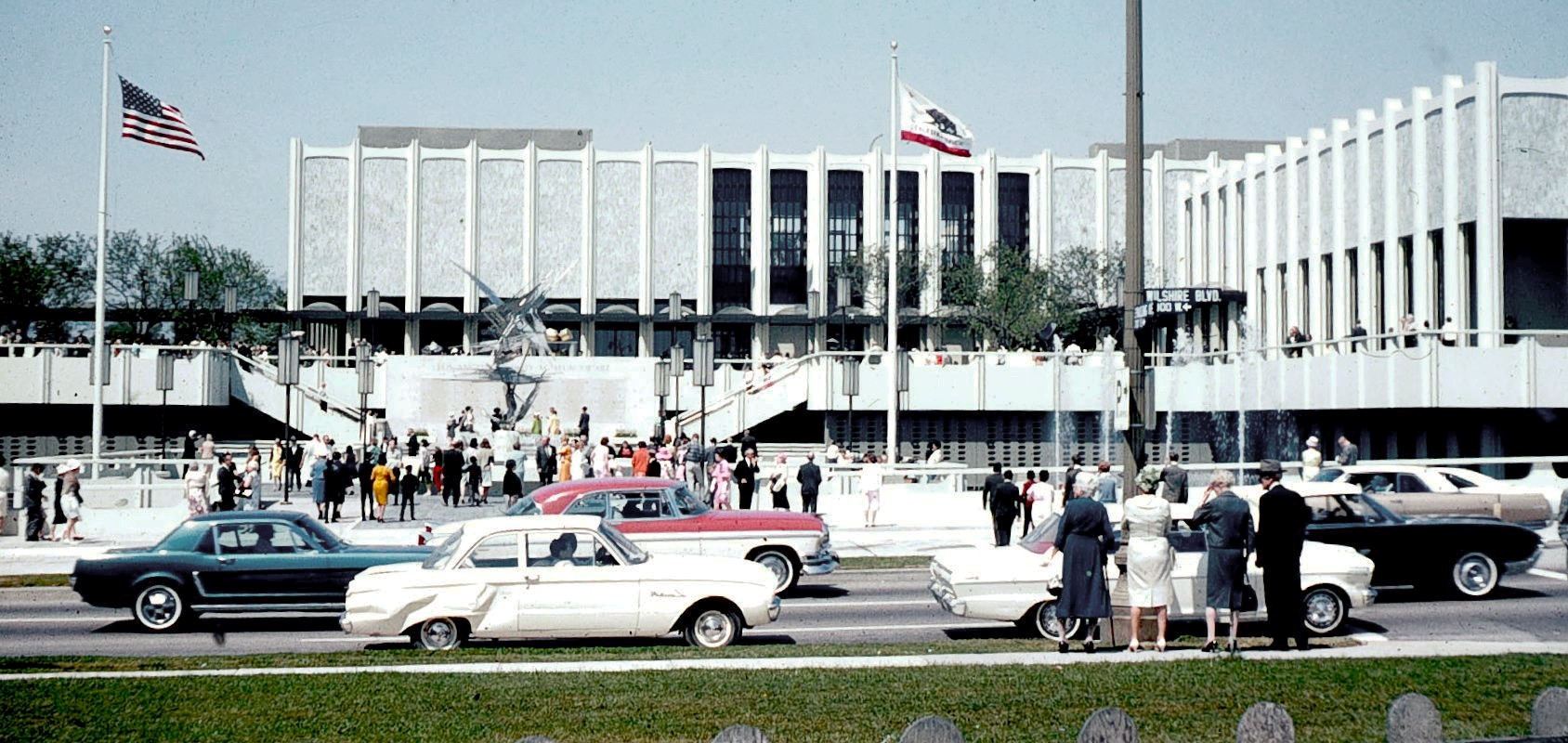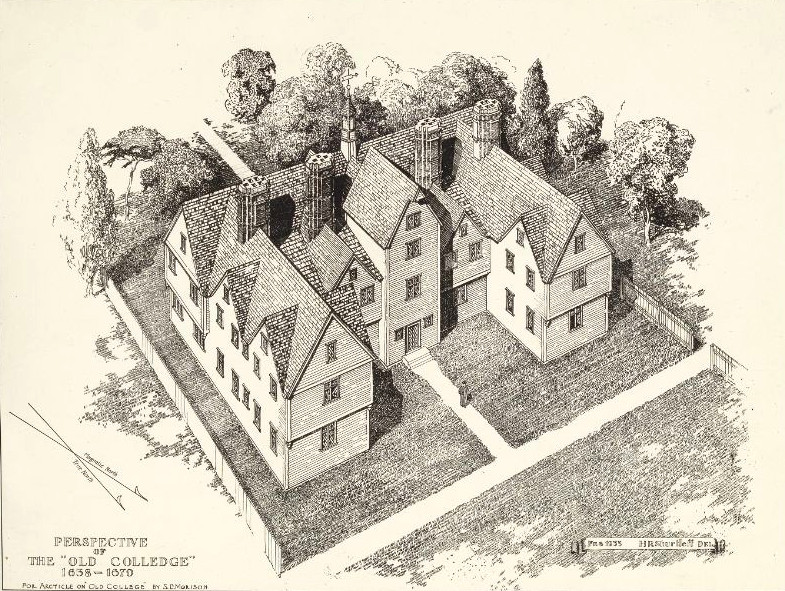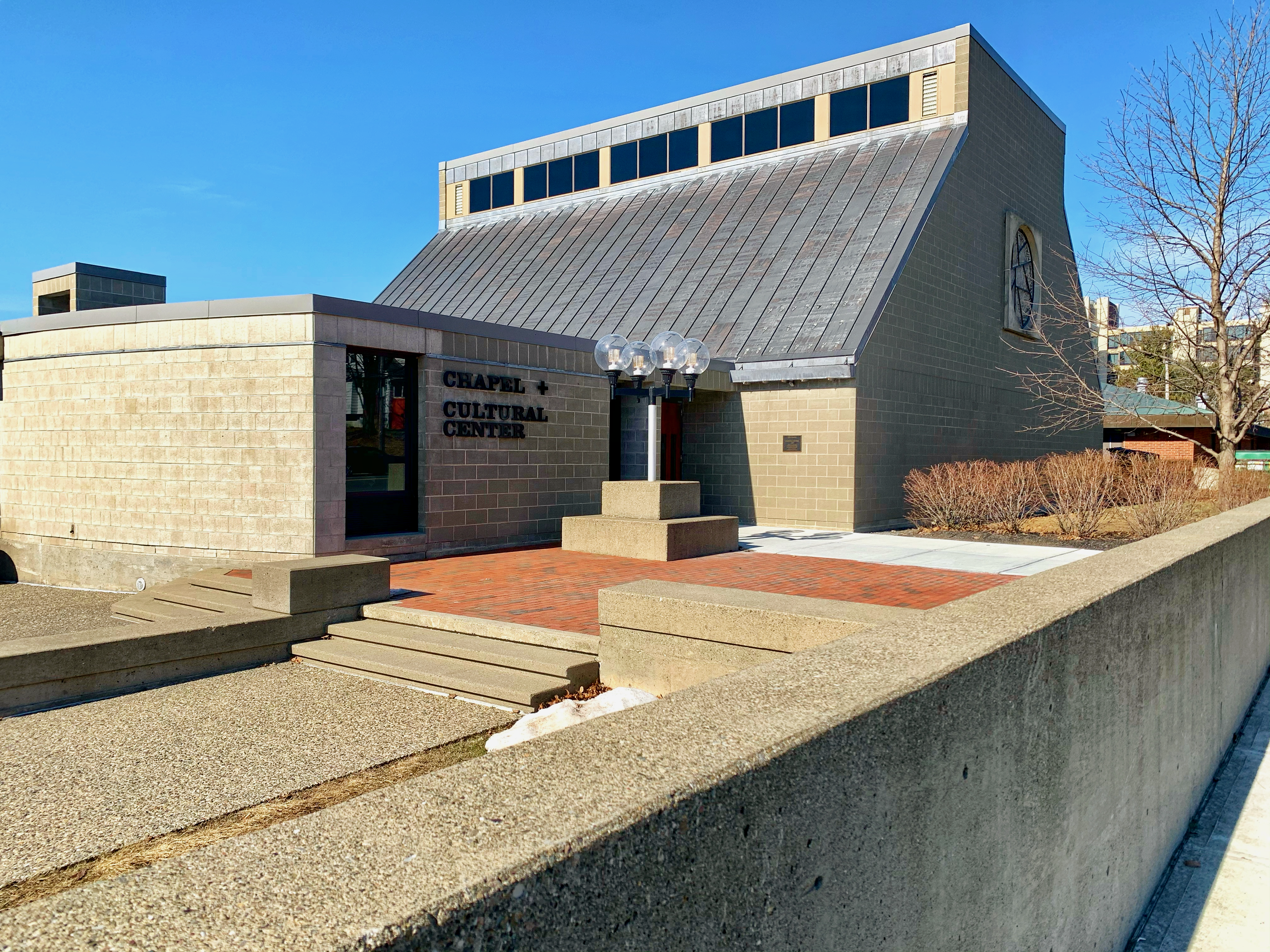|
Edward Catich
Edward M. Catich (1906–April 14, 1979) was an American Roman Catholic priest, teacher, and calligrapher. He is noted for the fullest development of the thesis that the inscribed Roman square capitals of the Augustan age and afterward owed their form (and their characteristic serifs) wholly to the use of the flat brush, rather than to the exigencies of the chisel or other stone cutting tools. Life His parents died when he was 11, and he and three brothers (including his twin) were taken by train to the orphanage of the Loyal Order of Moose, the Mooseheart campus near Aurora, Illinois. At the orphanage he apprenticed under sign-writer Walter Heberling. After graduating high school in 1924, Catich toured with a Mooseheart band, and then went to Chicago, where he played music in bands. Catich studied art at the School of the Art Institute of Chicago from 1926–29, and supported himself as a union sign-writer. Catich attended where he worked as the leader of the school band. He r ... [...More Info...] [...Related Items...] OR: [Wikipedia] [Google] [Baidu] |
The Reverend
The Reverend is an style (manner of address), honorific style most often placed before the names of Christian clergy and Minister of religion, ministers. There are sometimes differences in the way the style is used in different countries and church traditions. ''The Reverend'' is correctly called a ''style'' but is often and in some dictionaries called a title, form of address, or title of respect. The style is also sometimes used by leaders in other religions such as Judaism and Buddhism. The term is an anglicisation of the Latin ''reverendus'', the style originally used in Latin documents in medieval Europe. It is the gerundive or future passive participle of the verb ''revereri'' ("to respect; to revere"), meaning "[one who is] to be revered/must be respected". ''The Reverend'' is therefore equivalent to ''The Honourable'' or ''The Venerable''. It is paired with a modifier or noun for some offices in some religious traditions: Lutheran archbishops, Anglican archbishops, and ... [...More Info...] [...Related Items...] OR: [Wikipedia] [Google] [Baidu] |
Roman Catholic Diocese Of Davenport
The Diocese of Davenport ( la, Diœcesis Davenportensis) is a Latin Church ecclesiastical jurisdiction or diocese of the Catholic Church for the southeastern quarter of the U.S. state of Iowa. There are within the diocese. The diocese's eastern border is at the Mississippi River; the northern border comprises the counties of Jasper, Poweshiek, Iowa, Johnson, Cedar, and Clinton; the western border is made up of the counties of Jasper, Marion, Monroe, and Appanoose; and the southern border is the Iowa– Missouri border. The current bishop of the diocese is Bishop Thomas Zinkula. It is a suffragan see of the Archdiocese of Dubuque. The See city for the diocese is Davenport. Sacred Heart Cathedral is the cathedral church. History Before 1881, the Diocese of Dubuque's territory comprised the entire state of Iowa. Previous divisions had taken territory outside the state of Iowa from the Diocese to give to other newly created Dioceses. Eventually, Bishop John Hennessy ... [...More Info...] [...Related Items...] OR: [Wikipedia] [Google] [Baidu] |
Encyclopædia Britannica
The ( Latin for "British Encyclopædia") is a general knowledge English-language encyclopaedia. It is published by Encyclopædia Britannica, Inc.; the company has existed since the 18th century, although it has changed ownership various times through the centuries. The encyclopaedia is maintained by about 100 full-time editors and more than 4,000 contributors. The 2010 version of the 15th edition, which spans 32 volumes and 32,640 pages, was the last printed edition. Since 2016, it has been published exclusively as an online encyclopaedia. Printed for 244 years, the ''Britannica'' was the longest running in-print encyclopaedia in the English language. It was first published between 1768 and 1771 in the Scottish capital of Edinburgh, as three volumes. The encyclopaedia grew in size: the second edition was 10 volumes, and by its fourth edition (1801–1810) it had expanded to 20 volumes. Its rising stature as a scholarly work helped recruit eminent ... [...More Info...] [...Related Items...] OR: [Wikipedia] [Google] [Baidu] |
Los Angeles County Museum Of Art
The Los Angeles County Museum of Art (LACMA) is an art museum located on Wilshire Boulevard in the Miracle Mile vicinity of Los Angeles. LACMA is on Museum Row, adjacent to the La Brea Tar Pits (George C. Page Museum). LACMA was founded in 1961, splitting from the Los Angeles Museum of History, Science and Art. Four years later, it moved to the Wilshire Boulevard complex designed by William Pereira. The museum's wealth and collections grew in the 1980s, and it added several buildings beginning in that decade and continuing in subsequent decades. In 2020, four buildings on the campus were demolished to make way for a reconstructed facility designed by Peter Zumthor. His design drew strong community opposition and was lambasted by architectural critics and museum curators, who objected to its reduced gallery space, poor design, and exorbitant costs. LACMA is the largest art museum in the western United States. It attracts nearly a million visitors annually. It holds more than 15 ... [...More Info...] [...Related Items...] OR: [Wikipedia] [Google] [Baidu] |
Harvard College
Harvard College is the undergraduate college of Harvard University, an Ivy League research university in Cambridge, Massachusetts. Founded in 1636, Harvard College is the original school of Harvard University, the oldest institution of higher learning in the United States and among the most prestigious in the world. Part of the Faculty of Arts and Sciences, Harvard College is Harvard University's traditional undergraduate program, offering AB and SB degrees. It is highly selective, with fewer than five percent of applicants being offered admission in recent years. Harvard College students participate in more than 450 extracurricular organizations and nearly all live on campus—first-year students in or near Harvard Yard, and upperclass students in community-oriented "houses". History The school came into existence in 1636 by vote of the Great and General Court of the Massachusetts Bay Colony—though without a single building, instructor, or student. In 1638, the c ... [...More Info...] [...Related Items...] OR: [Wikipedia] [Google] [Baidu] |
Chapel + Cultural Center At Rensselaer
The Chapel + Cultural Center at Rensselaer is an architecturally unique, multipurpose performing arts and spiritual space in Troy, New York. The Center is owned and operated by the Rensselaer Newman Foundation (RNF). It is conventionally referred to as "The C+CC"; the "+" sign has come to be formally used instead of "and" or an ampersand as a representative symbol of the Christian cross. While located on the campus of Rensselaer Polytechnic Institute (RPI), the C+CC is managed and operated as an independent organizational entity. The C+CC provides a home to the Roman Catholic University Parish of Christ Sun of Justice, and its staff members provide administrative support to Catholic, Protestant, Jewish and Muslim chaplaincy services at RPI. Early history The Roman Catholic Church at RPI began as a Newman Association with a faculty advisor in 1907. ("Newman Associations" and "Newman Centers" are often used to designate Catholic campus ministry centers at state and other non-Cathol ... [...More Info...] [...Related Items...] OR: [Wikipedia] [Google] [Baidu] |
Typeface
A typeface (or font family) is the design of lettering that can include variations in size, weight (e.g. bold), slope (e.g. italic), width (e.g. condensed), and so on. Each of these variations of the typeface is a font. There are thousands of different typefaces in existence, with new ones being developed constantly. The art and craft of designing typefaces is called '' type design''. Designers of typefaces are called '' type designers'' and are often employed by '' type foundries''. In desktop publishing, type designers are sometimes also called ''font developers'' or ''font designers''. Every typeface is a collection of glyphs, each of which represents an individual letter, number, punctuation mark, or other symbol. The same glyph may be used for characters from different scripts, e.g. Roman uppercase A looks the same as Cyrillic uppercase А and Greek uppercase alpha. There are typefaces tailored for special applications, such as cartography, astrology or mathematics ... [...More Info...] [...Related Items...] OR: [Wikipedia] [Google] [Baidu] |
Catholic Art Association
The Catholic Art Association (CAA) was founded in 1937 by Sister Esther Newport as an organization of artists, art educators and others interested in Catholic art and its philosophy. The CAA published the '' Catholic Art Quarterly'', sponsored annual conventions, and hosted workshops until the organization dwindled and eventually dissolved in 1970. History In 1936, Sister Esther Newport saw a need for improved art education in Catholic schools and for a set of standards regarding ecclesiastical art. She drew up an initial proposal for a Catholic College Art Association that year but did not find much support at that time. After a Peter Boswell column in the March 1937 issue of ''Art Digest'' addressed similar issues in Catholic art, Newport revisited her idea and sent it to Boswell. He in turn gave the proposal publicity in his April 1937 column and helped to garner public support for the organization. Newport then called for an organizational meeting at Providence High School i ... [...More Info...] [...Related Items...] OR: [Wikipedia] [Google] [Baidu] |
Houghton Library
Houghton Library, on the south side of Harvard Yard adjacent to Widener Library, is Harvard University's primary repository for rare books and manuscripts. It is part of the Harvard College Library, the library system of Harvard's Faculty of Arts and Sciences. History Harvard's first special collections library began as the Treasure Room of Gore Hall in 1908. The Treasure Room moved to the newly built Widener Library in 1915. In 1938, looking to supply Harvard's most valuable holdings with more space and improved storage conditions, Harvard College Librarian Keyes DeWitt Metcalf made a series of proposals which eventually led to the creation of Houghton Library, Lamont Library, and the New England Deposit Library. Funding for Houghton was raised privately, with the largest portion coming from Arthur A. Houghton Jr., in the form of stock in Corning Glass Works. Construction was largely completed by the fall of 1941, and the library opened on February 28, 1942. Along with mu ... [...More Info...] [...Related Items...] OR: [Wikipedia] [Google] [Baidu] |
Hallmark Cards
Hallmark Cards, Inc. is a private, family-owned American company based in Kansas City, Missouri. Founded in 1910 by Joyce Hall, Hallmark is the oldest and largest manufacturer of greeting cards in the United States. In 1985, the company was awarded the National Medal of Arts. In addition to greeting cards, Hallmark also manufactures such products as party goods, gift wrap, and stationery. Hallmark acquired Binney & Smith in 1987, and would later change its name to Crayola, LLC after its well-known Crayola brand of crayons, markers and colored pencils. The company is also involved in television, having produced the long-running ''Hallmark Hall of Fame'' series since 1951, and launching the Hallmark Channel 50 years later (replacing an earlier joint venture with The Jim Henson Company, Odyssey Network). History Driven by an early 20th-century postcard craze, Joyce Clyde Hall and his older brothers, William and Rollie, began the Norfolk Post Card Company in 1907, initially h ... [...More Info...] [...Related Items...] OR: [Wikipedia] [Google] [Baidu] |
John Schmits
John is a common English name and surname: * John (given name) * John (surname) John may also refer to: New Testament Works * Gospel of John, a title often shortened to John * First Epistle of John, often shortened to 1 John * Second Epistle of John, often shortened to 2 John * Third Epistle of John, often shortened to 3 John People * John the Baptist (died c. AD 30), regarded as a prophet and the forerunner of Jesus Christ * John the Apostle (lived c. AD 30), one of the twelve apostles of Jesus * John the Evangelist, assigned author of the Fourth Gospel, once identified with the Apostle * John of Patmos, also known as John the Divine or John the Revelator, the author of the Book of Revelation, once identified with the Apostle * John the Presbyter, a figure either identified with or distinguished from the Apostle, the Evangelist and John of Patmos Other people with the given name Religious figures * John, father of Andrew the Apostle and Saint Peter * Pop ... [...More Info...] [...Related Items...] OR: [Wikipedia] [Google] [Baidu] |
Edward Catich Grave
Edward is an English given name. It is derived from the Anglo-Saxon name ''Ēadweard'', composed of the elements '' ēad'' "wealth, fortune; prosperous" and '' weard'' "guardian, protector”. History The name Edward was very popular in Anglo-Saxon England, but the rule of the Norman and Plantagenet dynasties had effectively ended its use amongst the upper classes. The popularity of the name was revived when Henry III named his firstborn son, the future Edward I, as part of his efforts to promote a cult around Edward the Confessor, for whom Henry had a deep admiration. Variant forms The name has been adopted in the Iberian peninsula since the 15th century, due to Edward, King of Portugal, whose mother was English. The Spanish/Portuguese forms of the name are Eduardo and Duarte. Other variant forms include French Édouard, Italian Edoardo and Odoardo, German, Dutch, Czech and Romanian Eduard and Scandinavian Edvard. Short forms include Ed, Eddy, Eddie, Ted, Teddy and Ned. ... [...More Info...] [...Related Items...] OR: [Wikipedia] [Google] [Baidu] |








